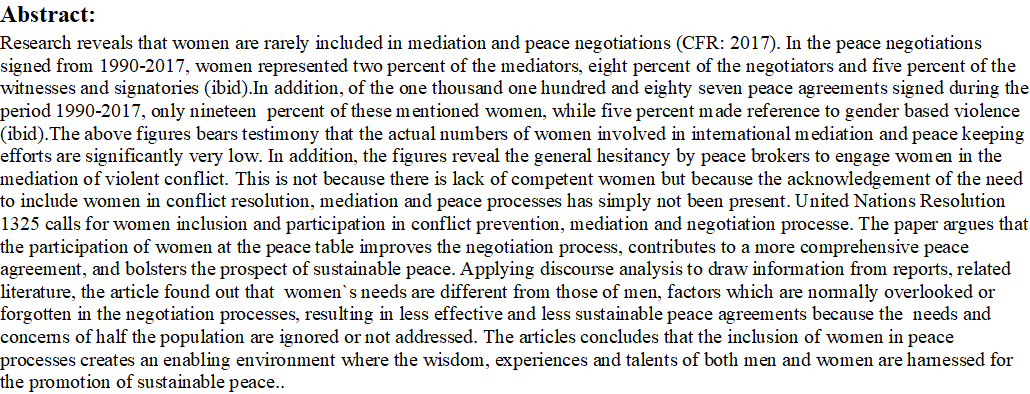The Relevance of Inclusivity in Mediation and Negotiation Processes: A Reflection
Authors
Abstract
Research reveals that women are rarely included in mediation and peace negotiations (CFR: 2017). In the peace negotiations signed from 1990-2017, women represented two percent of the mediators, eight percent of the negotiators and five percent of the witnesses and signatories (ibid).In addition, of the one thousand one hundred and eighty seven peace agreements signed during the period 1990-2017, only nineteen percent of these mentioned women, while five percent made reference to gender based violence (ibid).The above figures bears testimony that the actual numbers of women involved in international mediation and peace keeping efforts are significantly very low. In addition, the figures reveal the general hesitancy by peace brokers to engage women in the mediation of violent conflict. This is not because there is lack of competent women but because the acknowledgement of the need to include women in conflict resolution, mediation and peace processes has simply not been present. United Nations Resolution 1325 calls for women inclusion and participation in conflict prevention, mediation and negotiation processe. The paper argues that the participation of women at the peace table improves the negotiation process, contributes to a more comprehensive peace agreement, and bolsters the prospect of sustainable peace. Applying discourse analysis to draw information from reports, related literature, the article found out that women`s needs are different from those of men, factors which are normally overlooked or forgotten in the negotiation processes, resulting in less effective and less sustainable peace agreements because the needs and concerns of half the population are ignored or not addressed. The articles concludes that the inclusion of women in peace processes creates an enabling environment where the wisdom, experiences and talents of both men and women are harnessed for the promotion of sustainable peace..




